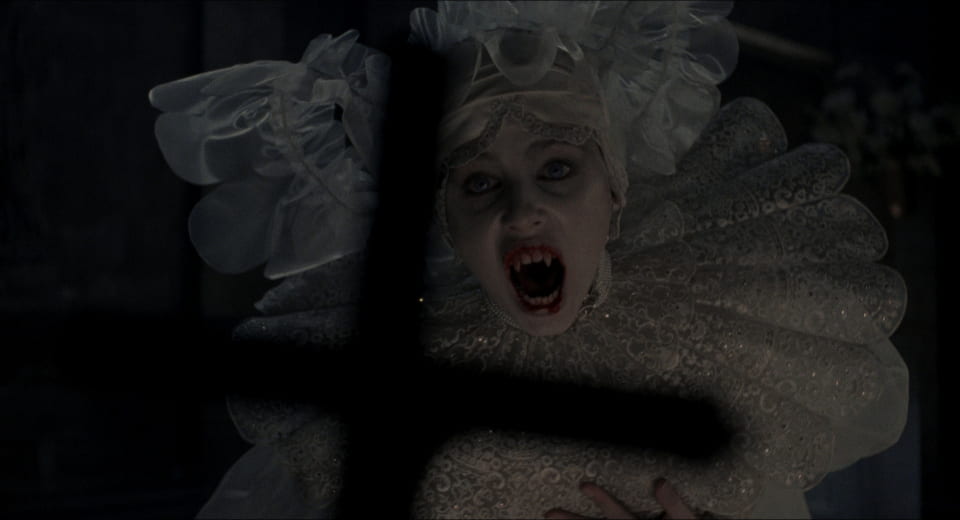
Still from Bram Stoker’s Dracula
Chris Forrester bites into the cinematic history of the world’s most famous vampire and how filmmaker Francis Ford Coppola transformed the story into an operatic, dazzling epic like none other.
When I wrote last month about remakes, one film that consistently crossed my mind was Bram Stoker’s Dracula (Coppola, 1992), a superlative reworking of the classic epistolary novel into a lush epic of passion and bloodthirst. But I didn’t include it then, both because I knew I would already be writing about it now, and because it feels, to me, on a couple of levels like less of a remake than the first true adaptation of its source material.
More than 50 films feature Dracula as a character or owe a good deal of their inspiration to his namesake novel, including among them lost films, unauthorized adaptations, remakes of unauthorized adaptations, and pornos. The most significant among them are Nosferatu (Murnau, 1922), the classic German Expressionist bootlegging of Stoker’s work and its first film adaptation (though some cite a 1921 film called Dracula’s Death, scholars have been unable to verify a pre-1923 premiere date); Dracula (Browning, 1931), the Bela Lugosi-starring classic that marked the king vamp’s first authorized film; Horror of Dracula (Fisher, 1958), the originator of another screen titan in the role as the first of Christopher Lee’s outings as the character; Nosferatu the Vampyre (Herzog, 1979), an elemental fairytale remake of Nosferatu that found the titular creature’s worldly likeness in Klaus Kinski; and Bram Stoker’s Dracula, which for the first time in the character’s long, storied screen history, simply came at the material relatively head-on, making room to accommodate all the things Dracula had become since his creation but not allowing them to crowd out the fullness of Stoker’s text.
The epistolary nature of Dracula (the novel) seems to prove fertile ground for film adaptations; the basic premise invites tonal and stylistic creativity, and the dry sprawl and absent authorial voice of its narrative all but necessitate it. For the uninitiated, or those who’ve only gleaned bits and pieces from the myriad modified versions that have made it to the screen, the basis is something like this: a solicitor from England, Jonathan Harker, travels to the Carpathian Mountains to help an elderly count, Dracula, purchase a home in London. Preyed upon by a trio of vampire women living alongside the count in his castle, Harker is left behind as Dracula travels to England aboard the ship Demeter, and once there begins to terrorize a bevy of characters all conveniently related to Harker. Among these supporting players are the madman Renfield and Professor Abraham Van Helsing, both of whom have come to occupy roles in Dracula lore a bit divorced from their origins (as asylum patient and professor, respectively).
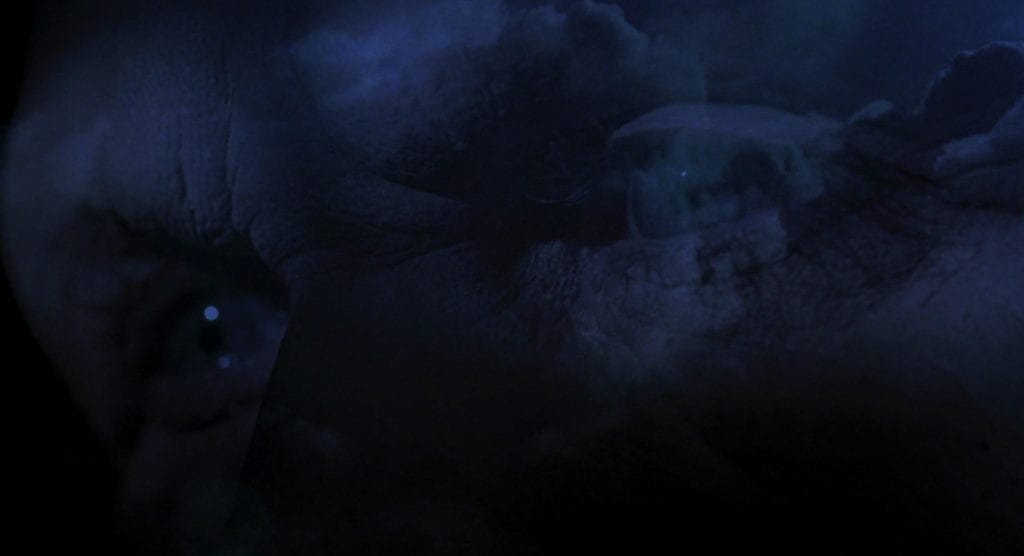
Dracula controls a sudden storm as the Demeter arrives on the English coast
For his adaptation, starring Keanu Reeves as Harker and Gary Oldman as Dracula, Coppola worked from a script by James V. Hart that largely preserved the narrative intricacies of the original text — its changing locations, bevy of lead and supporting players, and shifting fates especially — merely recontextualizing them within a romantic and occasionally erotic reimagining of Dracula’s origin. Here, though still at turns grizzled old man, steadfast conspirator, suave romancer, and creature of the night, Dracula is a man nurturing a centuries-old broken heart first and foremost, and in a prologue that cements the film’s extraordinary visual palette we witness him renounce the church and embrace the powers of darkness to avenge his late wife Elisabeta after learning of her suicide.
More than just an origin and contextualizing motive, what the prologue of Bram Stoker’s Dracula establishes is the M.O. of an adaptation that is not only the character’s truest iteration, but also most all-encompassing. In the case of the count’s origin, the film makes explicit a much-debated facet of the original story (where the count’s historical identity is only speculated upon by the characters) in revealing him to be Vlad III, better known as Vlad the Impaler.
Ask a Dracula scholar whether or not the eponymous figure is meant to be or be inspired by Vlad the Impaler, and you’ll likely be bored to death and no closer to a clear answer — the short of it is that Stoker’s notes make no indication of inspiration or that he even knew who Vlad was, but characters in the novel do make references suggestive of an intended connection, whether confirmed or not — but by the time of Bram Stoker’s Dracula’s writing, the pair had become closely entwined in popular culture. Thus what the film’s prologue achieves is something of a subsuming of reputation into identity; this Dracula is Vlad the Impaler in part because, irrespective of original intent, the two had become all-but synonymous.
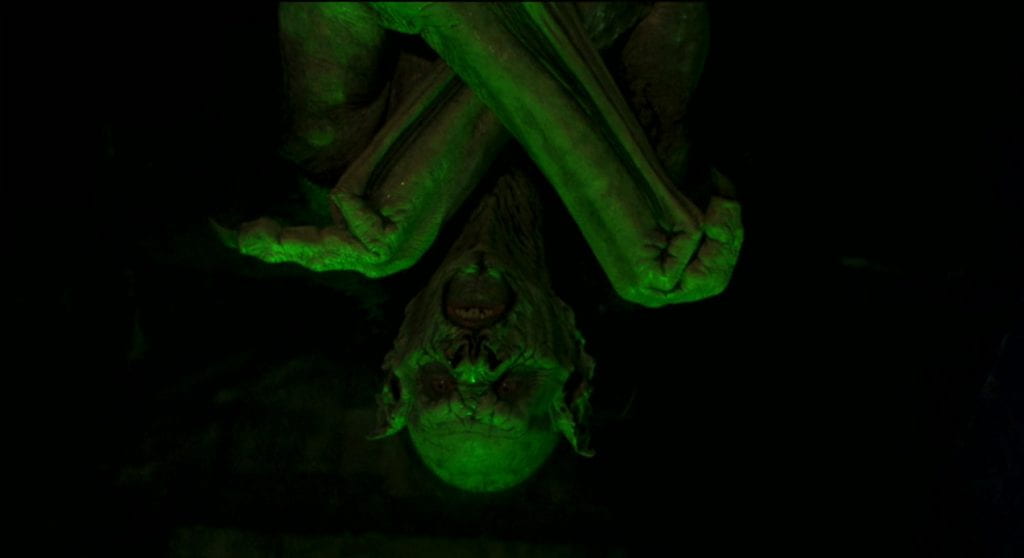
Here, the count is no one thing; he’s old, young, monstrous, and human, retaining his shapeshifting abilities from the novel
Elsewhere, the film plays the relationship between the count and Mina Harker as gothic romance, more than just predator-prey victimizing. In Stoker’s novel, Dracula feeds first on Lucy, who dies and is risen as “nosferatu” in one of film and novel’s eerier passages, before moving on to Mina, following her return from Budapest with a recovering Jonathan. In Coppola’s film, however, Jonathan’s absence from the story is extended, affording extra time in which Mina meets the count (having de-aged himself into a dapper young gentleman by feeding on the Demeter’s crew) and is wooed by him in part because his loss and the loneliness of its aftermath parallels her own.
Here, the film’s departure from Stoker’s text encompasses two closely related threads in twentieth-century vampirism. First, Dracula’s female victim as romantic object, originated in Nosferatu’s reworking of the story by an ending in which Ellen (that film’s Mina) must sacrifice herself, her beauty distracting the wicked Count Orlok, who is killed by the light of the rising sun as he attempts to drink her blood. And second, vampirism — and specifically the act of receiving the vampire’s bite — as erotic/romantically gratifying, a facet stemming as much from the romantic victimhood angle as from the erotic and even sexually explicit interpretations that emerged from it.
Much as Dracula himself, and the vampire more generally, had become a mainstay of gothic horror and the monster movie, so too had the vampire become an erotic figure; prefiguring the likes of Twilight and True Blood were films both moderately arousing — The Hunger (Scott, 1983), Daughters of Darkness (Kümel, 1971) — and luridly erotic, like Vampyros Lesbos (Franco, 1971). Bram Stoker’s Dracula folds in some of that influence to flavor its particular telling, lending the film’s horror the relish of a bad dream gone sexy. The effect is occasionally discordant, as in Oldman’s uneven turn as the younger, more suave count in England, but largely outstanding — an invigorating retelling of Stoker’s text rendered in lush, dreamy sequences of surreal titillation.
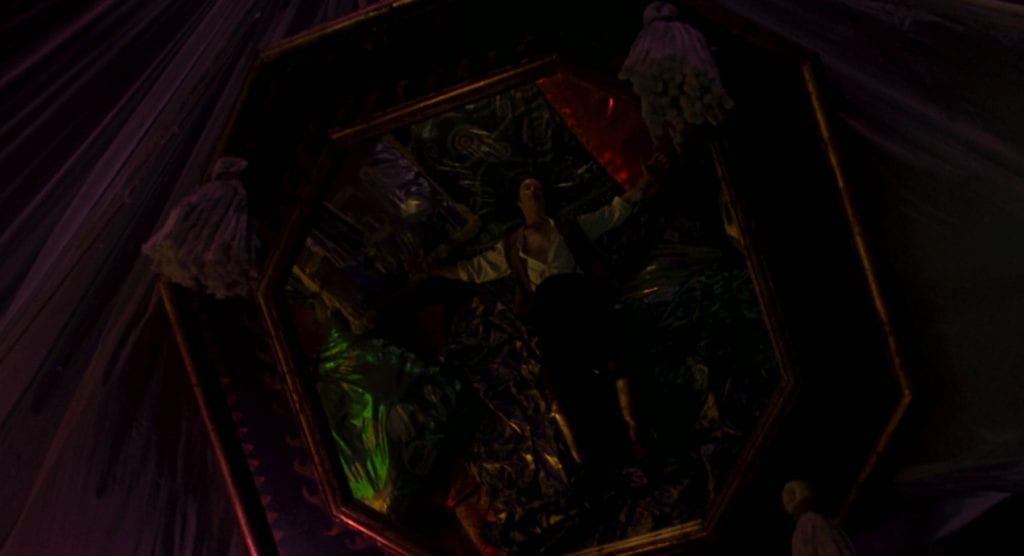
Jonathan is accosted by vampire women in one of the film’s more brazenly erotic scenes
Another closely interrelated iteration of the vampire, popularized in the years prior to Bram Stoker’s Dracula, is as metaphor for contagion — Def by Temptation (James Bond III, 1990), The Hunger — and addiction — The Addiction (Ferrara, 1995), Habit (Fessenden, 1995). As the former, especially, Coppola’s film gestures to its subgenre peers and at the AIDS crisis more specifically; Anthony Hopkins’s Dr. Van Helsing notes during a medical demonstration that “civilization and syphilization have advanced together.”
All this might seem to subvert the initial argument that Bram Stoker’s Dracula is the truest, and most complete, adaptation of the text, but rather to me such embellishments merely suggest a robust interest in the additional meanings attained by both the character and story that contains him over the years since his origin. Just as he set out to adapt, for the first time, the entirety of the novel, Coppola also takes in the whole of the character himself.
And what a beautiful whole Bram Stoker’s Dracula is — a masterwork of style and visual design that moves with grace and gusto through the novel’s many passages of shifting locales and tones. What is at first a rapturously surreal epic of war and passion lit with the deathdream hues of Kagemusha (Kurosawa, 1980) becomes subsequently a spooky gothic nightmare in the cavernous halls of Dracula’s castle; a supernaturally erotic fever dream upon Lucy’s seduction at Whitby, by way of a brief maritime horror interlude on the Demeter; an off-kilter (and off, in general) romantic drama about Dracula and Mina’s near-coupling; a chilly nighttime crusade through graveyards, subterranean crypts, madhouses, and decaying abbeys; and, finally, a white knuckled, race-against-time (and vampire) cross-country chase through the Carpathians.
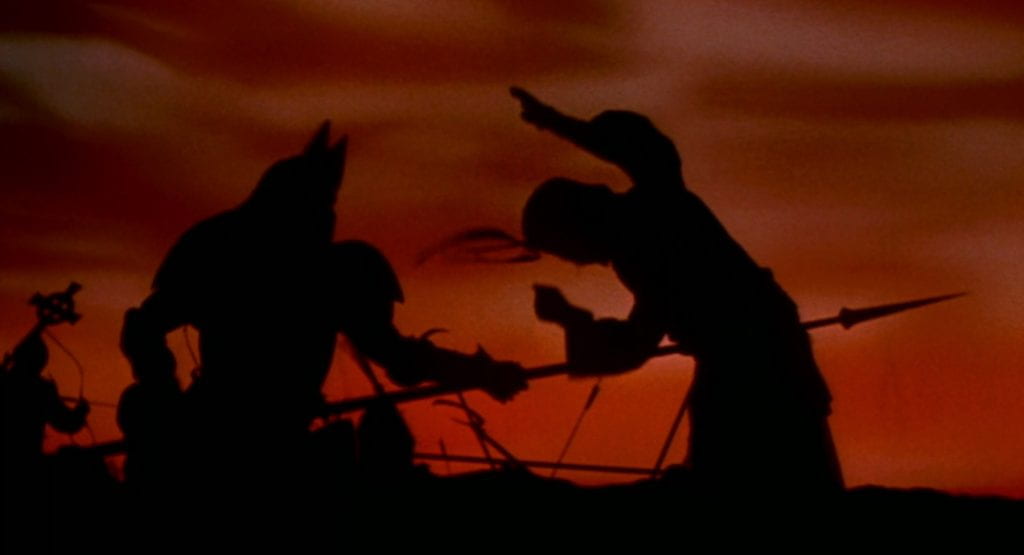
Dracula skewers enemy soldiers in the film’s surreal prologue
Often, though one can’t purport to understand exactly why other adaptations are written as they are, the omission of one or several such passages in other Dracula movies suggests a fear of longwindedness or unwieldiness. But there’s a distinct pleasure to the way Stoker’s novel is all of those things (and more!) in successive passages, and much as those adaptations may find strength in their focus on a select few episodes of the novel’s drama, there’s a singular beauty to the way they’re all rendered here.
Nearly fifteen years after completing one of the most outrageously accomplished four film runs in the medium’s history — The Godfather, The Conversation, The Godfather Pt. II, and Apocalypse Now back-to-back-to-back-to-back — Coppola released Bram Stoker’s Dracula at a much more unsteady place in his career. Though the contemporary response was more muted than such a film deserves (albeit correct about its performance issues, just levying complaints at the wrong actor), appreciation has grown with time, and the film now feels like something of a swan song, if not for the filmmaker himself than for an era of his and Hollywood’s careers when this kind of passion-soaked, lavishly produced, wonderfully textured, and often very weird epic could exist at all, let alone at such a budget (adjusted for inflation, the film cost nearly a hundred million USD). But all things, even immortal vampires, meet their end; at least Coppola found heart in them while they lived.
Bram Stoker’s Dracula screens Sunday, April 28, at 7:35pm for free as part of the Escape the Week Mega Marathon, a rare snacks-allowed IU Cinema binge of Keanu Reeves movies. Other films include Bill & Ted’s Excellent Adventure, Speed, The Lake House, Point Break, and John Wick.